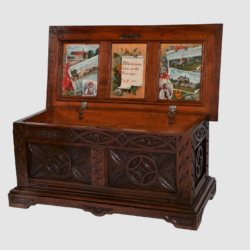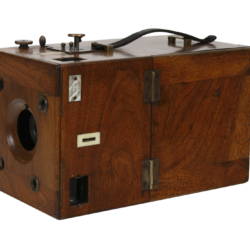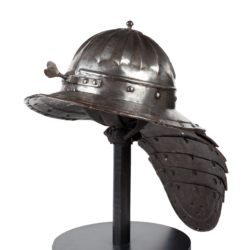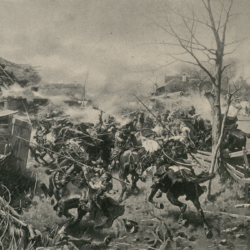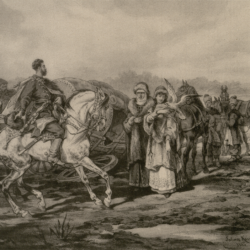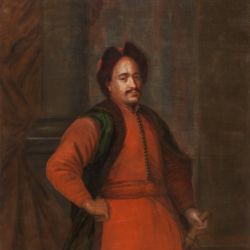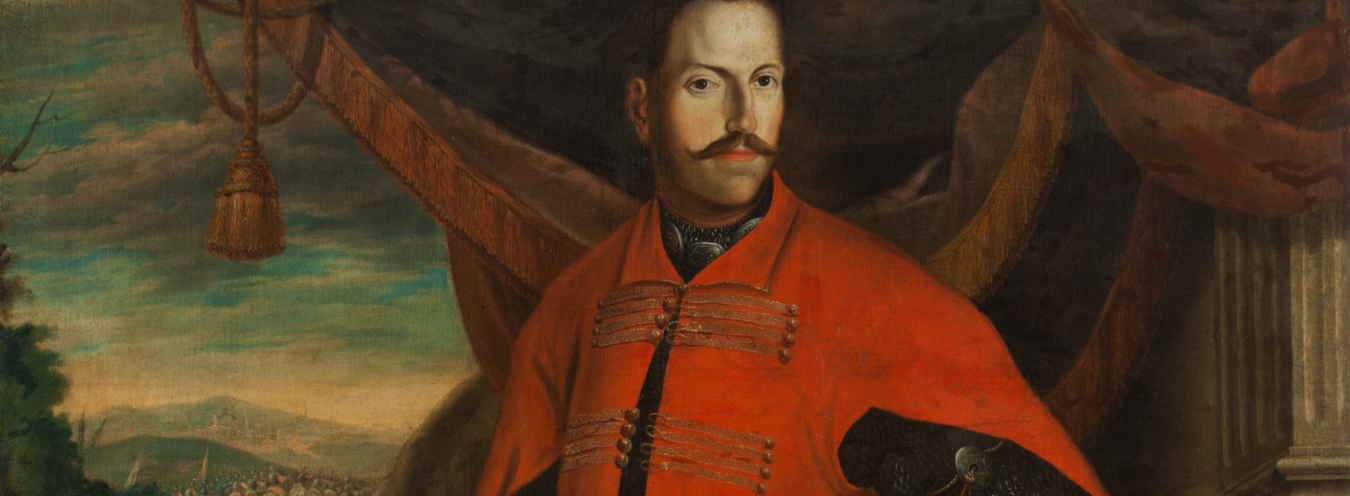
Engagement and community
The connection between the “chosen” individual and the nation was expressed by mass scenes – battles, assaults, marches, The Siege of Jasna Góra and the Battle of Grunwald. “Ford definitely deserves the spontaneous applause which the Battle of Grunwald sometimes gets: the entire event is portrayed with flamboyance, vivacity, and admirable skill in managing huge masses of extras”[1][trans. K.F], Szczepański wrote, emphasizing the cinematic synchronized engagement of the crowd of actors on screen, and the crowd of spectators in front of it.
This particular engagement also applied to the world outside the screenings. It found its most direct expression in the already mentioned castings and in the debates concerning them. Most importantly, however, the production of each of the adaptations demanded strenuous efforts. The budget for the Knights of the Teutonic Order exceeded ten times the budget for an average Polish film of the late 1950s and early 60s. Ford employed thousands of extras and six hundred horses, and eighteen thousand costumes were sewn. Finally, a modern, expensive tape was used.
In the case of The Deluge, the numbers are even more impressive: twenty four thousand costumes sewn, nine thousand costumes borrowed, ten thousand props produced, five thousand borrowed (they had to be transported to the film set in the USSR in 250 train wagons). Ten tons of explosives were used. What’s important, apart from things prepared by the Łódź film production company, a lot of tasks were outsourced. “Lace for Kmicic” was made by women from Koniaków, and the gloves were prepared by Zakłady Białoskórniczo-Rękawicznicze “Renifer” [Renifer Leather Industry]. “Cepelia” wove the fabric for the “Piotrkowianka” cooperative, which in turn sewed the costumes. Czesław Piaskowski was responsible for the sugar chalices, Lech Leski from Wilkowice near Bielsko-Biała, called “the armorer from the Beskid Mountains”, took care of the armor. “W. Bednarek, the manager of a hat store at Rynek Trybunalski” in Piotrków Trybunalski produced the hats, bonnets and caps for the Swedish army. Bednarek observed that “due to such big commissions, three people have work in the slack season” [trans. K.F]. Glass – 340 pieces of it – was prepared by the Hortensja glassworks based in Piotrków Trybunalski, and the iron was struck hot by blacksmith craftsmen from Zakład Narzędzi Rzemieślniczych in Sułkowice. A specialist research center, the Institute of Heavy Organic Synthesis in Blachownia Śląska, produced styrofoam bricks, the aim of which was to look natural, while preventing the actors from injuries. Hotel Cristal in Białystok was the venue for purchasing used saddle-cloths. The preparation of the culverin was “a tough job” finished by Zamech from Elbląg. In September 1971, the following note was issued: “The workers do not hide the satisfaction of taking part in the production of The Deluge, which right now is the most awaited Polish film”[2].
In all these production processes, collaboration with the USSR was very important, both politically and practically speaking (USSR offered money and production support). The joint production of a film especially important for the Polish people – with the main scene portraying the defense of the Jasna Góra monastery – could easily be used for the purposes of “soft propaganda”. The army was also helping, as is often the case with period drama productions: they provided extras, pyrotechnics, and the protection of the areas where battle scenes were shot[3]. The collaboration with the Catholic Church was a complete novelty – it was, however, essential, due to the plot contents of Sienkiewicz’s novel. The satirical magazine Szpilki jokingly asserted that – unlike the Swedes – the filmmakers conquered the Jasna Góra monastery, and in December 1971, Jerzy Tomziński, the prior of the order in Jasna Góra, stated “this time Jasna Góra has actually surrendered” [trans. K.F]. It can also be said that thanks to filmmakers, the Catholic Church – perceived as an institution and the patron of national heritage – began to appear in the public debate.
This efforts were, of course, possible due to a political decision. They reflected the atmosphere within the society. The political aims of the state and the communitarian needs of the society merged within the grand national film project. After the premiere of Knights of the Teutonic Order, one critic noted: “So it happened – we have our own great historical movie, just like Russians, Americans, Italians or the English do”[4]. Therefore, when a contemporary scholar asserts that “nobody – neither the viewers, nor the reviewers (except for these associated with the propaganda) – treated the ideological context of the creation of Knights of the Teutonic Order seriously” [trans. K.F], it can be assumed that this statement is not at all valid.
Firstly, the political impact of the movie was related to the process of strengthening social ties based on anti-German attitudes, which in 1960 were very much present because of the temporal proximity of WWII. The great battle presented in Knights of the Teutonic Order became incorporated into the persistent narrative about “the Polish nation fighting against the German invaders” [trans. K.F]. Its aim was not to remind about the glorious victory, but to remind about the persistent threat. Władysław Gomułka, the first secretary of the Polish United Workers’ Party (PUWP), observed that “the violent nature of German imperialism has not changed since the times of Ulrich von Jungingen, and is still present in the times of Konrad Adenauer”[5]. Henryk Jabłoński, a political scientist, but also a member of the PUWP, emphasized that no one wants to “incite nationalistic pride”[6]. The most telling element of the propaganda associated with Ford’s movie is the recurring reference to Konrad Adenauer – the first Chancellor of the Federal Republic of Germany – as “a Teutonic Knight”. Interestingly, in 1958, Adenauer really became the Honorary Knight of the Teutonic Order, which in modern times performs charitable work. The rich and long history of the order cannot, of course, be reduced to the period of destroying and pillaging Polish lands, but the Teutonic Knights were regularly used as symbolic shorthand for Germans, in turn conflating the two into an image of the hostile – as was the case of Adenauer.
Secondly, the title of the already mentioned article by Henryk Jabłoński pointed to one more important phenomenon – the celebration of the millennial anniversary of the existence of Poland. Anti-German attitudes were thus supplemented by the embracement of modernity. Both a new school, opened in Stębark near Olsztyn during the celebrations, and the premiering great film production, confirmed the fact that Poland is a modern country.
Entertainment was by no means the main aim of adapting Sienkiewicz’s work. The goal of the state authorities was to employ ideas and emotions associated with the film in order to lend legitimacy to the social and political situation of Poland.
Jerzy Płażewski observed:
The cinematic quality of Sienkiewicz’s novel is present in the fact that all of its minor motifs, its grander themes, and psychological “close-ups” move in a symmetrical manner towards the monumental master plan of presenting the victory of united Slavdom over the traitorous Teutonic Order.[7]
One can wonder whether Płażewski was actually referring to the cinematic quality – or rather to the political one. The mentioned mechanism also worked in case of The Deluge. The enemy – the Swedes – could not be put to as direct use as the Germans, but they still reminded that the evil came from the West. All the cinematic elements of this story were devoted to portraying the victory of “specifically Polish” elements. Propaganda was obsolete: the entire nation participated in the film’s production, mobilized as if in a state of war.
A society is united by its own cure.
“The national cure, colored”[8] – this was the expression used by Zygmunt Kałużyński to describe Knights of the Teutonic Order, while after the premiere of The Deluge, Krzysztof Mętrak announced victory:
Each Pole has their own “personal Sienkiewicz” – the characters created by the writer live inside us like mythical creatures, expressing the communal national experience. The heroes of the Trilogy have never been individual, they have always constituted a great collective entity.[9]
Sienkiewicz’s protagonists led the lives of model knights and their beautiful ladies. The transformation of Kmicic is the essence of the aspiration to become a knight, but such is also the case of both Zbyszko and Staś – agewise, they are boys who become men able to turn into knights. The writer makes such a promise, and the filmmakers endow this promise with material existence – by means of modern cinematic productions, they aim for transforming contemporary Poles into modern Sarmatians, or at least for granting hope for such a transformation.
Przypisy
- JJS [J.J. Szczepański], Krzyżacy [Knights of the Teutonic Order], Ibidem. Such a scene was for sure the singing of the first Polish hymn, Bogurodzica [Mother of God] before the battle – Andrzej Wajda referred to this song and scene in the movie Pierścionek z ołem w koronie [The Ring with a Crowned Eagle] (1993).
- “Głos Elbląga” [The Voice of Elbląg], 11.11.1971; trans. K.F.
- The USSR provided a special cavalry regiment for the filmmakers. “Five hundred men and horses. A unit created to meet the needs of cinematography” [trans. K.F.], “Perspektywy” [Perspectives], 5.11.1971.
- J. Peltz, Krzyżacy [Knights of the Teutonic Order], “Film” [Film] 1960, issue 36, pp. 4–5; trans. K.F.
- Qtd. in M. Zaremba, Komunizm, legitymizacja, nacjonalizm. Nacjonalistyczna legitymizacja władzy komunistycznej w Polsce [Communism, Legitimization, Nationalism. Poland and the Nationalist Legitimisation of Power], Warsaw 2001, p. 309; trans. K.F.
- H. Jabłoński, Tysiąclecie Państwa Polskiego [A Thousand Years of the Polish State], “Nowe Drogi” [New Ways] 1960, issue 3, p. 9. Qtd. In M. Zaremba, Komunizm, legitymizacja, nacjonalizm. Nacjonalistyczna legitymizacja władzy komunistycznej w Polsce [Communism, Legitimization, Nationalism. Poland and the Nationalist Legitimisation of Power], Warsaw 2001, p. 309; trans. K.F.
- J. Płażewski, Ibidem, trans. K.F.
- Z. Kałużyński, Krzyżacy [Knights of the Teutonic Order], “Polityka” [Politics] 1960, issue 37; trans. K.F.
- K. Mętrak, Potop zwycięski [Deluge Victorious], “Kultura” [Culture] 1974, issue 36; trans. K.F.

